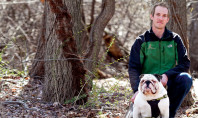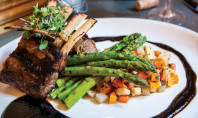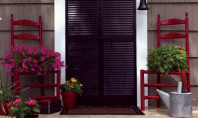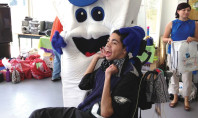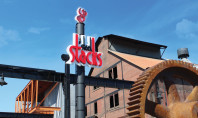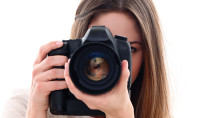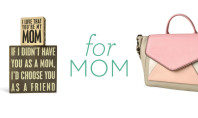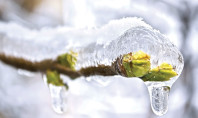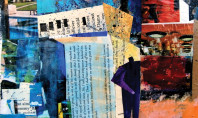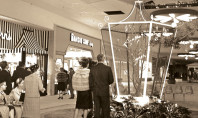From Accountant to Artist: Jacqueline Meyerson
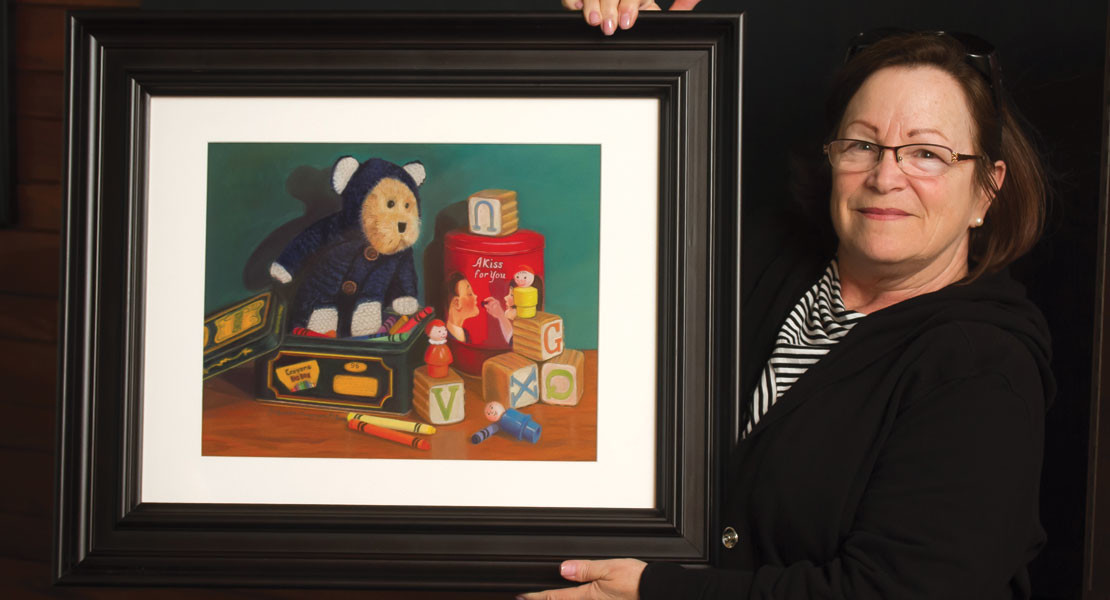
By Carole Gorney
Jacqueline Meyerson freely admits to having gone through a mid-life crisis, but unlike some others in the same predicament, her crisis led to a career-changing decision. It turned a bored accountant into a prolific, award-winning artist. Since 2011, she has won five juried awards, and has been featured in nearly a dozen art exhibitions, including the Pastel Society of America’s National Arts Club, where she won the 2012 Chicago Painters Award. How she got to this point is an amazing story.
“Early on I was very creative,” the Baum School of Art instructor recalls, “But my father encouraged me to go to college and become an accountant. When I was 40, I was comptroller of an electronics firm in New Jersey, and I went into a blue funk. So I asked for an exit package and got it.” After a brief stint as an ultrasound technician in a hospital, Meyerson found her life’s work, but it was quite by accident.
“I drove my daughter to her art class [in college] one day, and I sat in the back of the room doodling. The teacher came up to me after class and asked if she could enter my doodle in a contest.”
“I drove my daughter to her art class [in college] one day, and I sat in the back of the room doodling. The teacher came up to me after class and asked if she could enter my doodle in a contest.” That doodle didn’t get entered because Meyerson said she didn’t want to show up her daughter, who was a serious art student at the time, but it was the start of something that Meyerson couldn’t deny. “I went full circle back to being creative. It must have been there all along; I just never had a chance to
explore it.”
Her journey from accountant to artist is all the more remarkable since her only formal training was a couple of basic art courses in college. An entirely self-taught painter, Meyerson began by experimenting with different materials. “I started with pencils, then oil paints. I bought watercolors. I bought books. I didn’t have a studio or an easel. I just sat on the floor every day and played with color.”
Meyerson settled on pastel because she says it is the purest form of pigment – everything starts out with it. “I could touch it, use my fingers,” she explains. “I didn’t need a brush. It is forgiving. It can be moved around. I have a passion for it, and I pass that on to my students.”
She also admits to having a passion for food, which is a frequent subject of her paintings. “I went through a phase with food and vegetables. The day I did the asparagus [pastel] I was having a dinner party. I was shopping, and I kept looking at my cart and thinking what a great painting that [asparagus] would make.” It’s all about emotion and inspiration, Meyerson explains. “Ordinary things tell a story just by being themselves. If they inspire me, or invoke an emotion in me, I want to transfer that to others.”
Other subjects in her paintings include toys and items from antique stores. Meyerson says she had a happy childhood, and some of the objects evoke nostalgia for those times. A pastel of a Ball jar and old-fashioned wooded clothespins brings back memories of her grandmother, who hung clothes on a line outside a third-story window. “It was my job to hold the clothespins,” Meyerson recalls.
The stories evoked by some objects may not be so easy to decipher, but rather they raise interesting questions. In “Five,” her pastel of five partially filled Mason jars covered in dust, Meyerson says she wants to know who the person was who filled them.
In all of her works, Meyerson strives for absolute realism, which she says she considers reaching the highest level of skill and ultimate expression of perfection. “Being able to almost smell the onions on the table, or trying to touch the shiny glass of the water pitcher in the painting is representative of success.” She acknowledges that there is plenty of room for impressionism, painting in the abstract, blocks of color, or just a very loose representation of a subject. Nonetheless, for Meyerson, “Fooling the viewer into thinking that he/she is looking at a photo is my ultimate goal.”
She loves telling the story of the painting of corks that she once entered in a juried art show. The judges had all the paintings spread out on the floor, and one of the judges pointed to Meyerson’s pastel and declared that it should be eliminated from the competition. When asked why, the judge explained that photographs were not allowed in the competition. Ultimately the misperception was cleared up, and the embarrassed judge apologized to Meyerson. Even better, her painting took first place.
Most recently, Meyerson has found her muse in the floral life that comes from nature. In her classroom, the first object she has all her students paint is a red rose. “The rose teaches a lot about light, texture, color and shadows,” she says. The assignment also demonstrates that even in realism there is room for diversity. “Everyone’s rose looks different because they [the students] put their own personalities into the paintings. They are the paintings.”
Explaining her teaching philosophy, Meyerson says, “As a realist painter I teach my students to paint what they see and not what they think they see. My goal is to challenge my students to integrate colors, shapes and lines and to develop a sound foundation in their interpretive and creative endeavors with an artist’s eye. Cultivating good drawing techniques, composition, and evoking emotion through one’s work is an integral part of the process.”
Meyerson’s work will be represented at the 40th annual Art in the Park show on June 21 in Allentown’s West Park. You can also check out her pastels online by visiting meyersonstudios.com.


